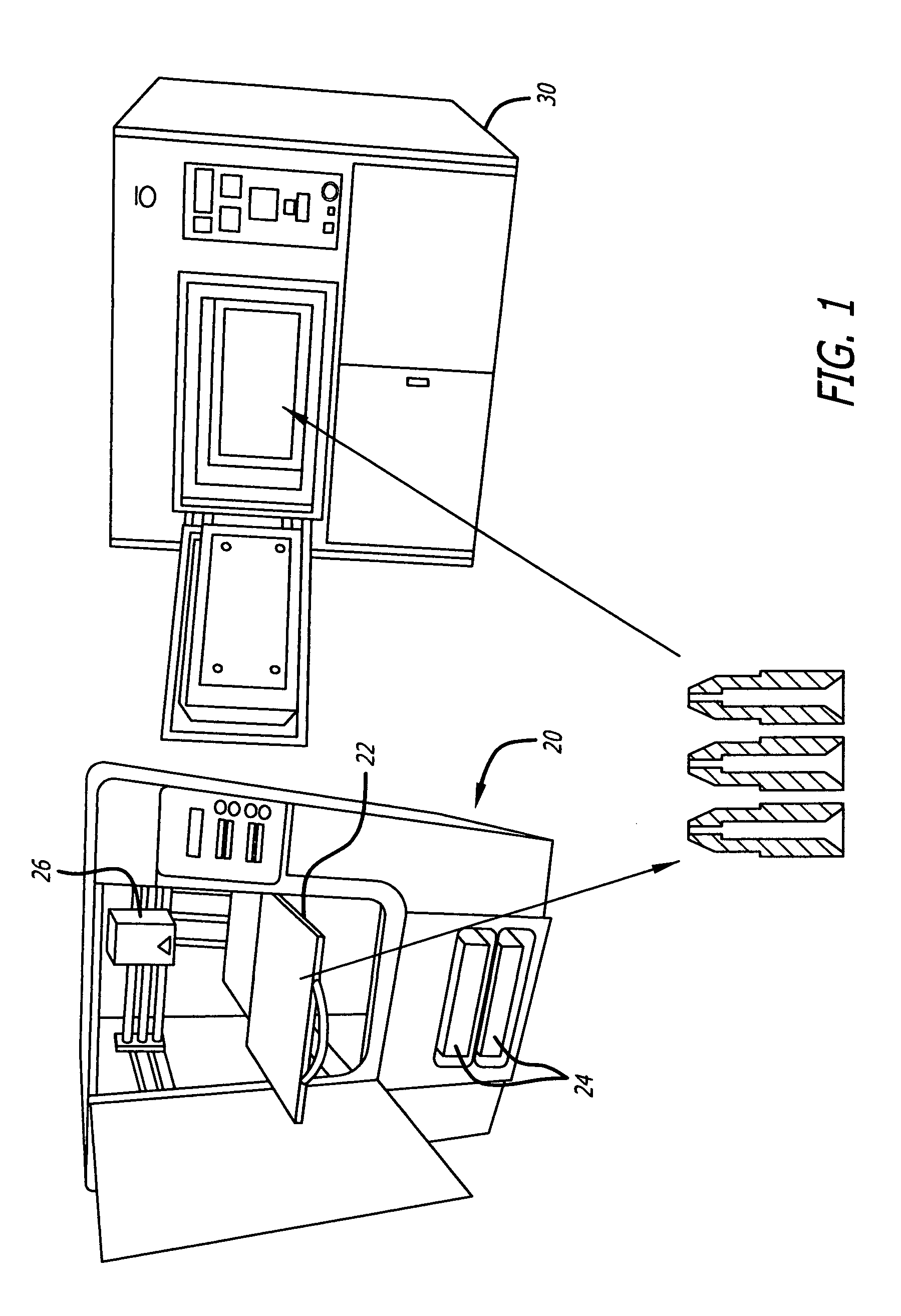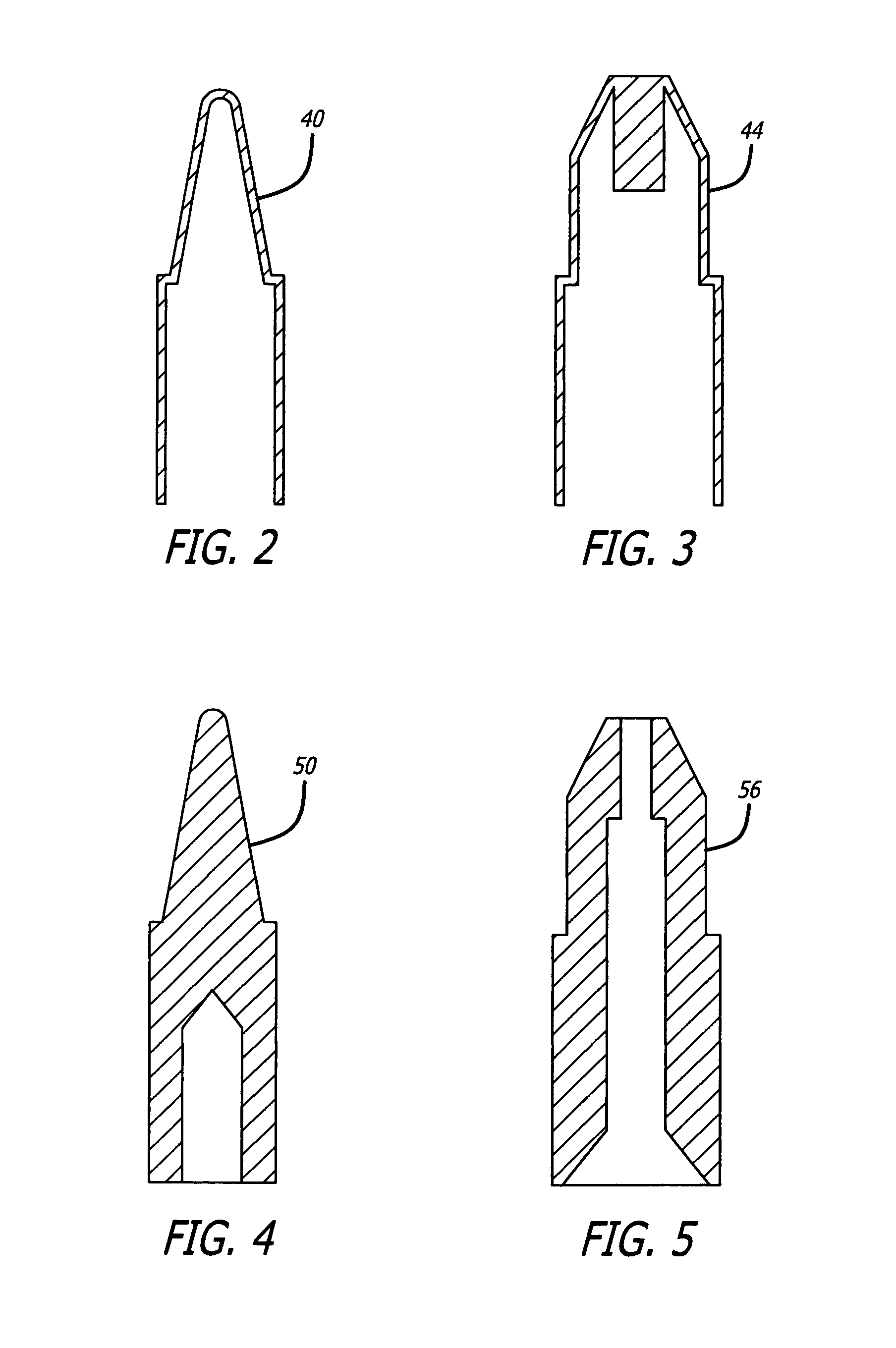Materials and Process Using a Three Dimensional Printer to Fabricate Sintered Powder Metal Components
- Summary
- Abstract
- Description
- Claims
- Application Information
AI Technical Summary
Benefits of technology
Problems solved by technology
Method used
Image
Examples
Embodiment Construction
[0019]FIG. 1 depicts the steps of the process of the present invention used to formulate a powder metal article 10, in particular in the example shown a soldering tip. In the build process depicted in FIG. 1, a FDM or polymer jet 3D printer 20, provided with a computer-generated design of the three dimensional structure of an articles 10, fabricates the articles 10 in a green state by the successive deposition of layers of feedstock material on the platform 22 of the 3D printer 20. The configuration of the 3D printer 20 may be similar to the small size “uPrint” 3D printers from Stratasys based in Eden Prairie, Minn., “MakerBot Replicator” 3D printer from MakerBot Industries, LLC of Brooklyn, N.Y., or the “Cube” 3D printer from 3D Systems Corporation of Rock Hills, S.C., or the large size 3D Printers such as the “Dimension Elite” from Stratasys.
[0020]The powder metal-plastic binder material may be provided to the 3D printer in a solid or semi-solid state depending on the type of feed...
PUM
| Property | Measurement | Unit |
|---|---|---|
| Grain size | aaaaa | aaaaa |
| Grain size | aaaaa | aaaaa |
| Temperature | aaaaa | aaaaa |
Abstract
Description
Claims
Application Information
 Login to View More
Login to View More - R&D
- Intellectual Property
- Life Sciences
- Materials
- Tech Scout
- Unparalleled Data Quality
- Higher Quality Content
- 60% Fewer Hallucinations
Browse by: Latest US Patents, China's latest patents, Technical Efficacy Thesaurus, Application Domain, Technology Topic, Popular Technical Reports.
© 2025 PatSnap. All rights reserved.Legal|Privacy policy|Modern Slavery Act Transparency Statement|Sitemap|About US| Contact US: help@patsnap.com



